Syllables | English Grammar Class 4 PDF Download
Introduction
A syllable is a part of a word that has one vowel sound. It can be the whole word or just part of it.
A syllable can be thought of as the “beat” in a word. When a word is spoken, each beat is one syllable. The number of vowel sounds in a word shows how many syllables it has.
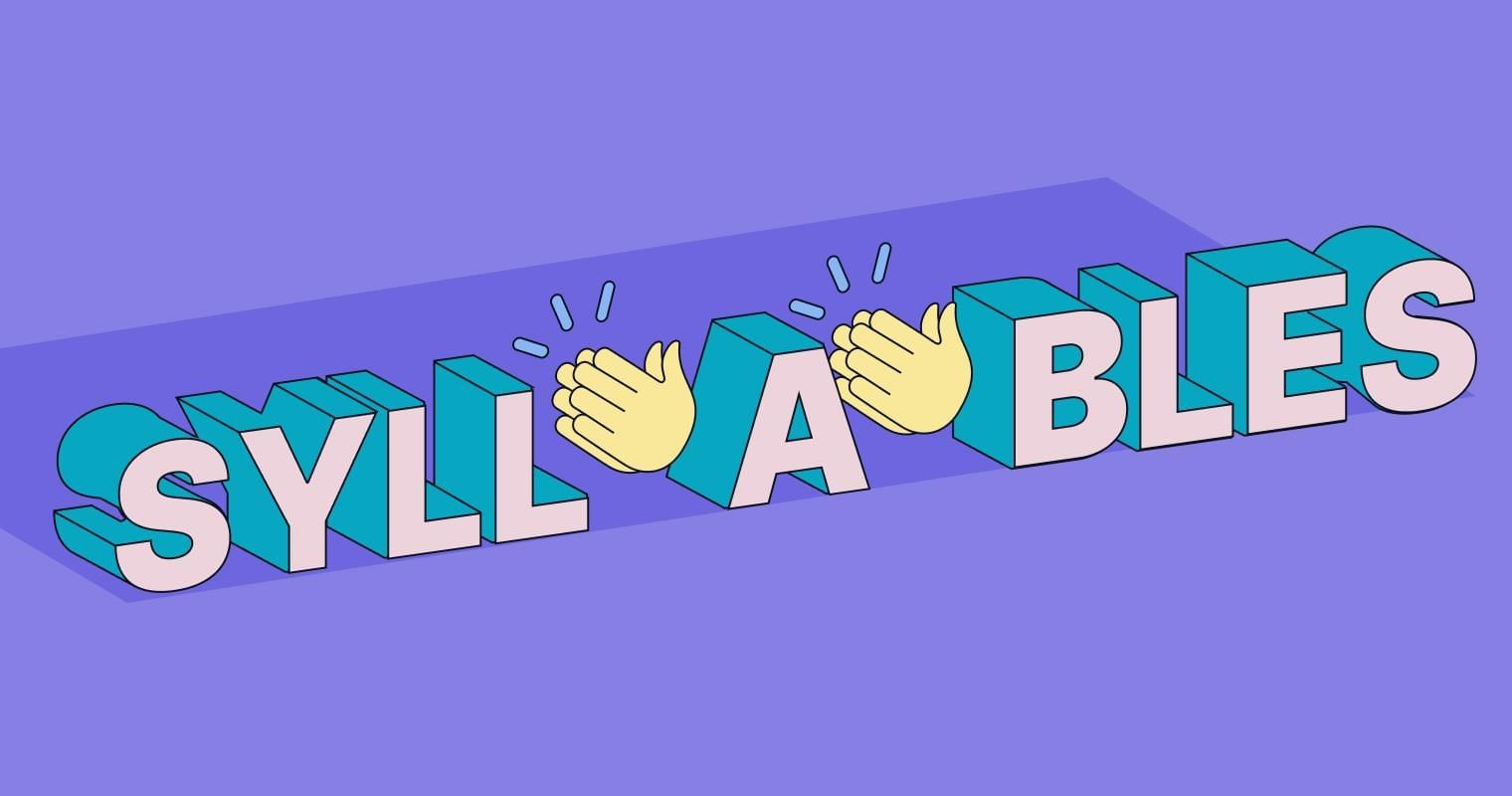
Example: book, moon, pap/er, dra/ma, ba/na/na, cro/co/dile, po/tat/o, prin/cess, mon/key, chair, cut/ter, lap/top, medi/cine, to/ma/to, gar/den, spec/ta/cles
(a) The vowel heard in a syllable could be from one or more vowel letters.
(b) The number of vowels heard in a word equals the number of syllables in the word.
Example:
- night = 1 vowel = 1 syllable word
- string = 1 vowel = 1 syllable word
- rac/ket = 2 vowel = 2 syllable word
- ten/nis = 2 vowel = 2 syllable word
- wa/ter = 2 vowel = 2 syllable word
- Com/pu/ter = 3 vowel = 3 syllable word
(c) Syllables are referred to as the ‘beats’ of spoken language. English words can have one, two, three or more syllables.
(d) Not every syllable necessarily contains a vowel letter, but every syllable will include a vowel sound when pronounced. The pronunciation of a word determines the number of syllables.
For example, “rhythm,” which has two syllables, does not contain any vowels, but it is said with two vowel sounds.
Examples of one-syllable words
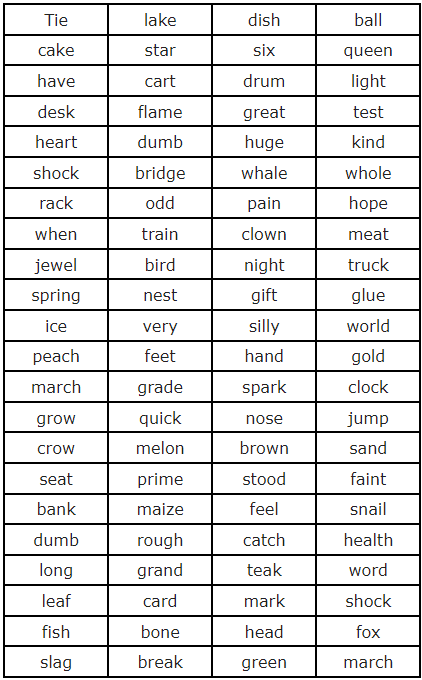
Examples of two-syllable words
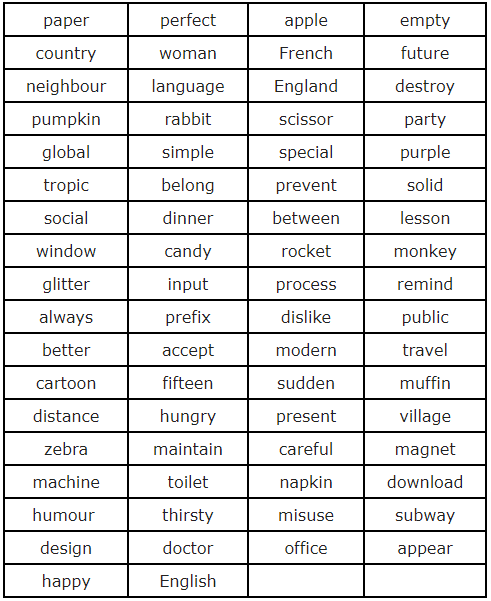
Examples of three-syllable words
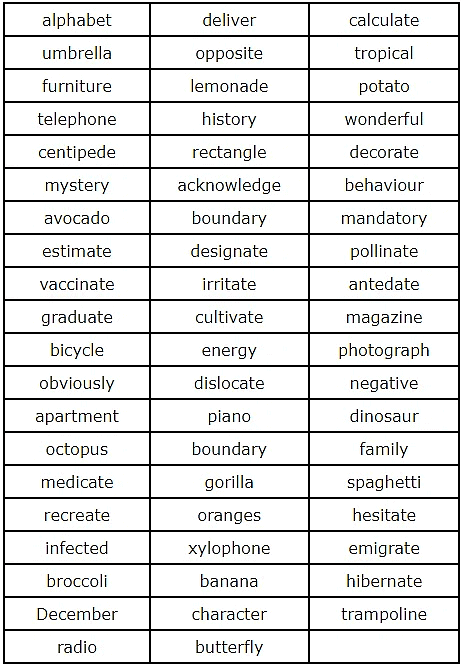
Examples of four-syllable words
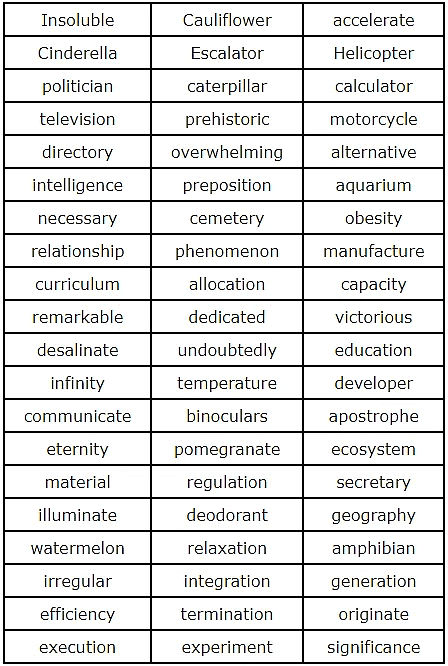
Types of Syllables
(1) Closed syllable
A closed syllable has a single vowel and ends with a consonant. The vowel has a short sound. It’s called a closed syllable because the vowel is “closed in” by a consonant. More than one consonant can be used to close in a syllable.
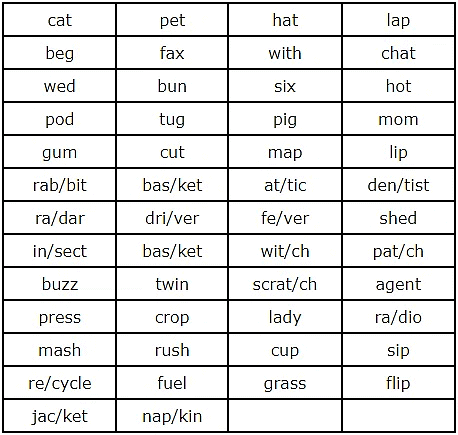
(2) Open syllable
An open syllable ends with a vowel sound that is spelled with a single vowel letter meaning there is no consonant after it.
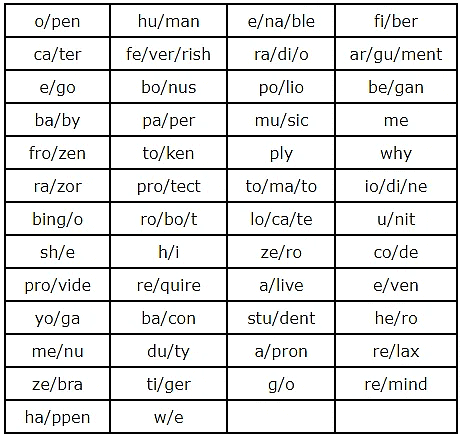
(3) Magic “E” syllable or Vowel-Consonant-e (VCe) syllables
It is a long vowel spelt with a single letter, followed by a single consonant, and a silent e. When the letter ‘e’ is at the end of a word, it’s usually silent and tells the other vowel or vowels in the word to pronounce themselves.
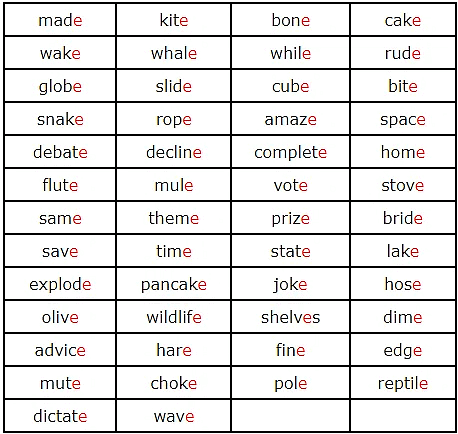
(4) Vowel teams syllable
A vowel team syllable has two vowels next to each other that together make a new sound.
Ai, Ay, Ee, Oa, Oe, Oi, Oy, Oo, Ou, Ow makes one sound.
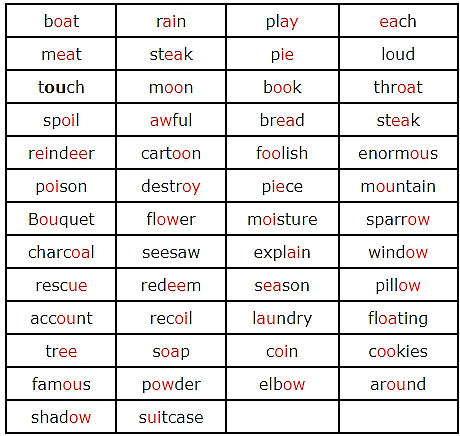
(5) R-controlled syllable
An r-controlled syllable has a syllable followed by a single letter “r.” The sound is controlled by the “r.”In an R-Controlled Syllable, the vowel is neither long nor short.
The er, ir, and ur all make the same sound, but ar and or are a little different, as they have more than one sound.
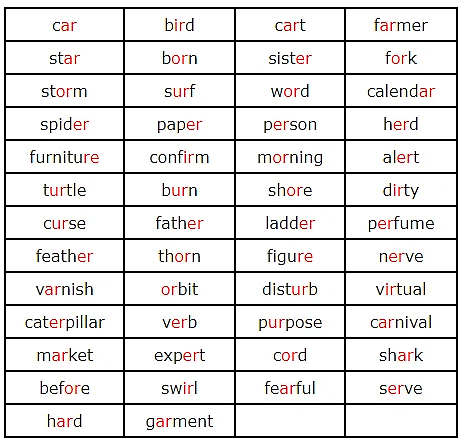
(6) Diphthong syllable
A diphthong syllable has two vowels together that join to make a new sound. The sound starts as one vowel sound and then moves to another.
The most common diphthongs in the English language are the letter combinations such as aw, au, ew, oi, oy, oo, ou, ow.
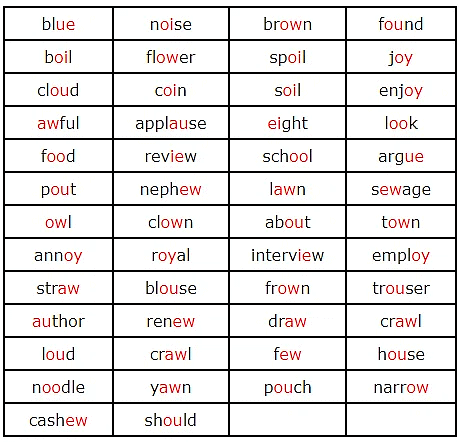
(7) Consonant-le syllable
A consonant-le syllable is a final syllable with one consonant followed by l and a silent e. It always occurs at the end of the word.
The silent e at the end of the syllable is the only vowel. Only the consonant and the l are pronounced.
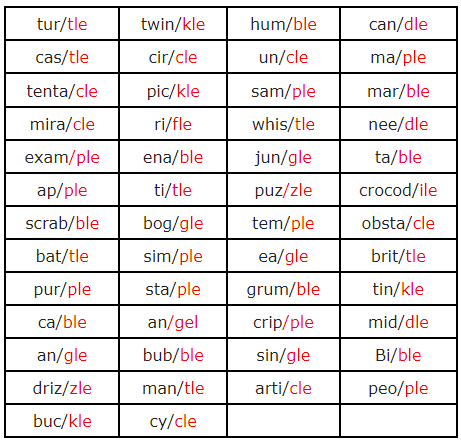
A syllable is one or more letters representing a unit of spoken language, consisting of a single, uninterrupted sound.
|
36 videos|247 docs|27 tests
|
FAQs on Syllables - English Grammar Class 4
| 1. What is a syllable, and how is it defined in linguistics? |  |
| 2. What are the different types of syllables, and how are they categorized? |  |
| 3. How do syllables impact the pronunciation of words? |  |
| 4. Why is understanding syllables important for language learning? |  |
| 5. What role do syllables play in poetry and rhythm? |  |

















